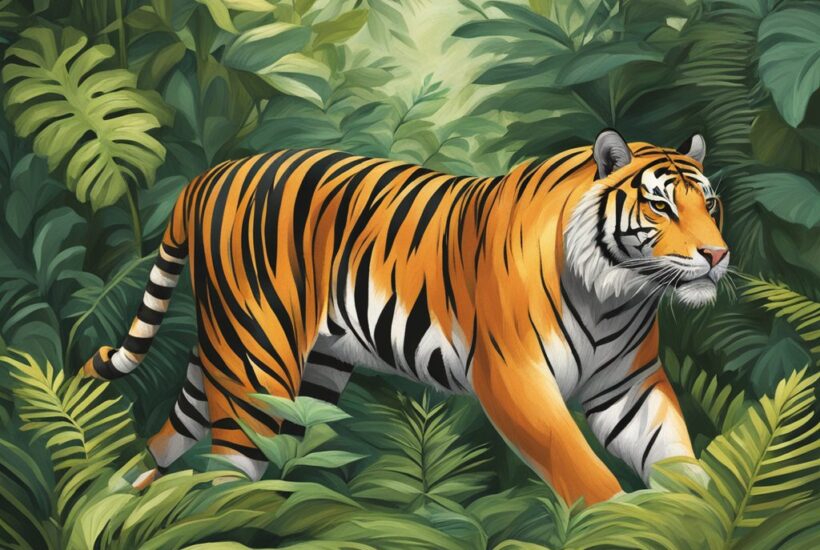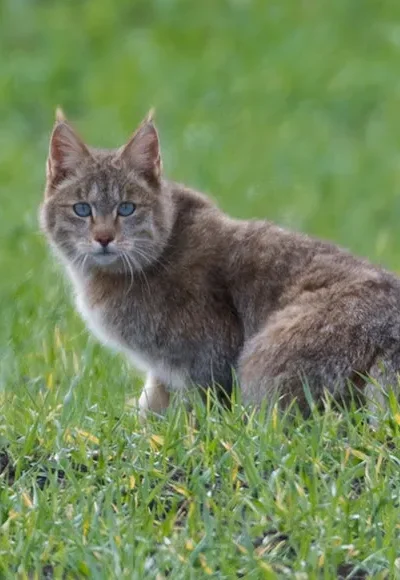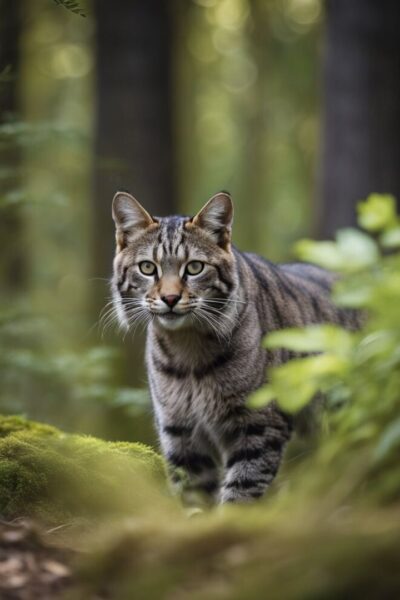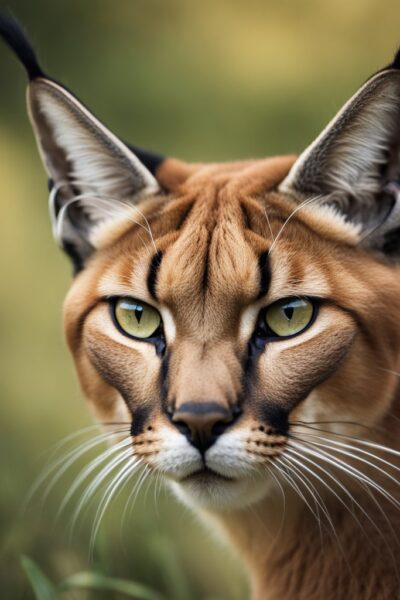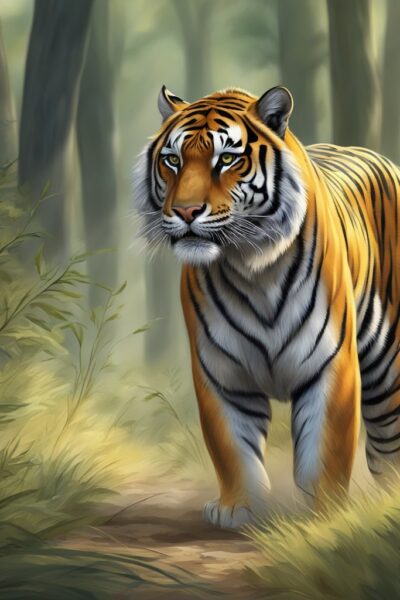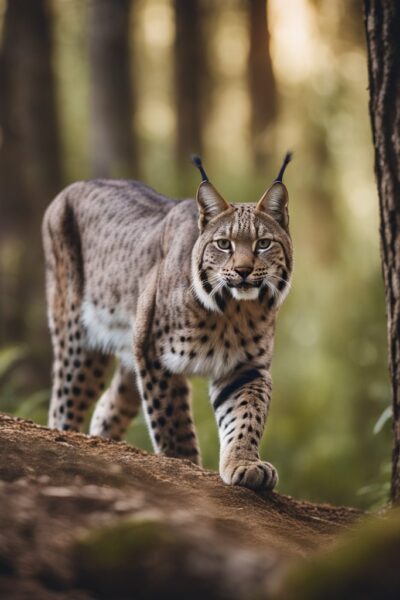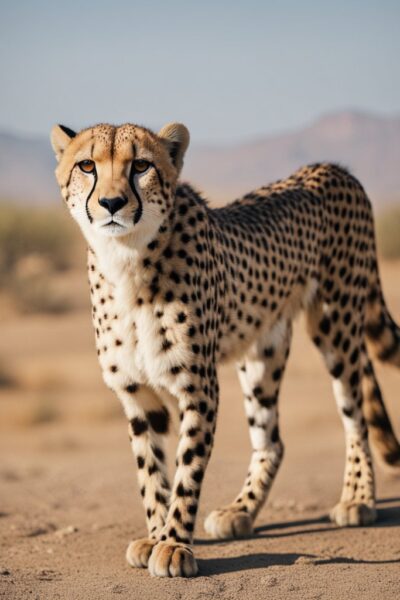Javan Tiger: Extinct Tiger Subspecies The Javan tiger once roamed the Indonesian island of Java but is now considered extinct. This majestic subspecies of the tiger was characterized by its relatively smaller size compared to other tiger subspecies and its distinctive stripe pattern. The Javan tiger’s prime habitat comprised of dense tropical forests, grasslands, and mangrove areas in Java’s lowland…
Read More
Tiger Subspecies: Six Surviving- Three Extinct
Tiger Subspecies: Six Surviving Tiger subspecies are all endangered. Tigers, being the largest members of the Felidae family, are one of the most captivating endangered species globally. Their numbers have significantly dropped by around 95% over the past century, and they now inhabit 40% less of the territory than they did a decade ago, as stated by the World Wildlife…
Read More
Leopard Cat: AKA Asian Leopard Cat
Leopard Cat: Habitat and Behavior The leopard cat or Asian Leopard Cat, is a small wild cat native to South, Southeast, and East Asia with distinctive, elegant markings similar to its larger relative, the leopard. These agile and adaptable felines inhabit various habitats, ranging from forests and grasslands to agricultural landscapes. They are generally solitary creatures, with a primarily nocturnal…
Read More
Chinese Mountain Cat: Chinese Steppe Cat
Chinese Mountain Cat: Ecology, Behavior, and Conservation Efforts The Chinese Mountain Cat (Felis bieti), sometimes called Chinese Steppe Cat or Chinese Desert Cat, is a rare and mysterious wildcat species with sky-blue eyes native to China. With limited information on their ecology and behavior, these elusive felines are often found in high-altitude environments, mostly in the mountainous regions of the…
Read More
European Wildcat
European Wildcat: Behavior and Habitat The European wildcat, Felis silvestris, is a small to medium-sized carnivore found throughout various regions in Europe. Known for its elusive behavior and preference for dense forests, this species has faced numerous threats, including habitat loss and hybridization with domestic cats. European wildcats are distinguished from their domestic counterparts by their robust build, striped fur,…
Read More
Caracal: African Wildcat Known As Desert Lynx
Caracal: a Remarkable African Wildcat The caracal, a medium-sized wild cat, is known for its distinct characteristics and remarkable agility. The African caracal is also called the Desert Lynx. Native to Africa, the Middle East, and parts of Asia, the caracal is a skilled and adaptable carnivore that thrives in a wide range of habitats. With a slender yet muscular…
Read More
Sounds Cats Love:
Sounds Cats Love: Discovering Feline Favorites Some researchers are now investigating cat preferences when it comes to music and toys, aiming to understand the intricacies of how cats perceive and react to specific noises and frequencies. Sounds Cats Love: Music Effects of Music on Cats Cats, much like humans, can have preferences when it comes to music. Studies have shown…
Read More
Leopard vs Cheetah Print | Spot The Difference
Leopard vs Cheetah Print: Know the Difference Leopard vs cheetah prints! Which one to use? Both cat prints have long been a popular design choice in fashion and interior design. These prints, inspired by the natural patterns found on the fur of leopards and cheetahs, both belong to the Felidae family but differ in their appearance and the animals they…
Read More
Smells Cats Hate
Smells Cats Hate: A Guide to Scents cats hate Smells cats hate is useful knowledge for cat parents. Understanding which smells cats hate can be useful for a variety of purposes, such as deterring them from entering specific areas, protecting them from harmful substances, or simply ensuring their comfort in their living environment. In this article, we will explore some…
Read More
Caspian Tiger
Caspian Tiger: Extinction, Conservation Efforts, and Reintroduction Possibilities The Caspian tiger, also known as Panthera tigris virgata, was a subspecies of tiger that once roamed vast regions of Central Asia. Its historic range extended from eastern Turkey and the Caspian Sea region to parts of China, including the Tarim Basin. Genetic studies have shown that the Caspian tiger was closely…
Read More
Canada Lynx
Canada Lynx: Essential Facts and Conservation Efforts The Canada Lynx (Lynx canadensis) is a fascinating wild feline species native to the forests of North America, particularly in Canada and some parts of the United States. Known for their elusive nature and distinct appearance characterized by tufted ears, large paws, and dense fur, these medium-sized cats play a crucial role in…
Read More
Iberian Lynx
Iberian Lynx: Conservation Efforts and Population Recovery The Iberian lynx, or Lynx pardinus, is a critically endangered wild cat species native to the Iberian Peninsula, which includes Spain, Portugal, and their surrounding regions. Known for its distinctive tufted ears and spotted coat, this elusive feline is one of the rarest and most unique wild cats found in Europe. The Iberian…
Read More
Asiatic Cheetah
Asiatic Cheetah: Conservation Status and Challenges The Asiatic cheetah, (Acinonyx jubatus venaticus), is a critically endangered subspecies of cheetah native to Iran. Once widespread across the Middle East and South Asia, this rare animal has experienced significant declines in both range and population, primarily due to habitat loss, human activity, and reduced prey availability. Today, Iran is the last stronghold…
Read More
